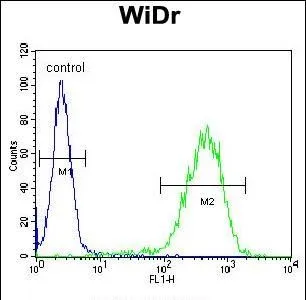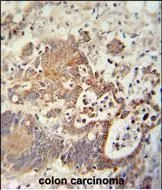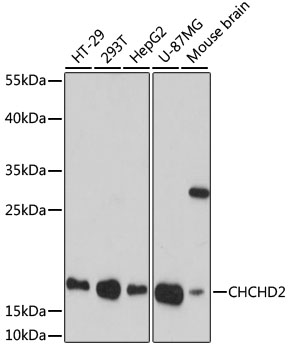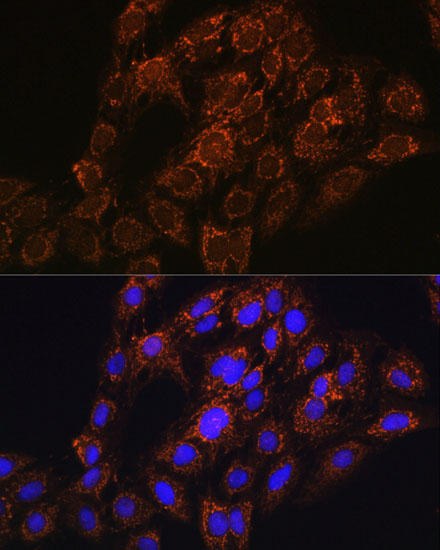
FACS analysis of WiDr cells using GTX17498 CHCHD2 antibody. Green : primary antibody Blue : negative control
CHCHD2 antibody
GTX17498
ApplicationsFlow Cytometry, Western Blot, ELISA, ImmunoHistoChemistry, ImmunoHistoChemistry Paraffin
Product group Antibodies
TargetCHCHD2
Overview
- SupplierGeneTex
- Product NameCHCHD2 antibody
- Delivery Days Customer9
- ApplicationsFlow Cytometry, Western Blot, ELISA, ImmunoHistoChemistry, ImmunoHistoChemistry Paraffin
- CertificationResearch Use Only
- ClonalityPolyclonal
- ConjugateUnconjugated
- Gene ID51142
- Target nameCHCHD2
- Target descriptioncoiled-coil-helix-coiled-coil-helix domain containing 2
- Target synonymsC7orf17, MIX17B, MNRR1, NS2TP, PARK22, coiled-coil-helix-coiled-coil-helix domain-containing protein 2, 16.7kD protein, HCV NS2 trans-regulated protein, MIX17 homolog B, aging-associated gene 10 protein, coiled-coil-helix-coiled-coil-helix domain-containing protein 2, mitochondrial, mitochondria nuclear retrograde regulator 1, mitochondrial nuclear retrograde regulator 1
- HostRabbit
- IsotypeIgG
- Protein IDQ9Y6H1
- Protein NameCoiled-coil-helix-coiled-coil-helix domain-containing protein 2
- Scientific DescriptionThe protein encoded by this gene belongs to a class of eukaryotic CX(9)C proteins characterized by four cysteine residues spaced ten amino acids apart from one another. These residues form disulfide linkages that define a CHCH fold. In response to stress, the protein translocates from the mitochondrial intermembrane space to the nucleus where it binds to a highly conserved 13 nucleotide oxygen responsive element in the promoter of cytochrome oxidase 4I2, a subunit of the terminal enzyme of the electron transport chain. In concert with recombination signal sequence-binding protein J, binding of this protein activates the oxygen responsive element at four percent oxygen. In addition, it has been shown that this protein is a negative regulator of mitochondria-mediated apoptosis. In response to apoptotic stimuli, mitochondrial levels of this protein decrease, allowing BCL2-associated X protein to oligomerize and activate the caspase cascade. Pseudogenes of this gene are found on multiple chromosomes. Alternative splicing results in multiple transcript variants. [provided by RefSeq, Feb 2016]
- Storage Instruction-20°C or -80°C,2°C to 8°C
- UNSPSC12352203







